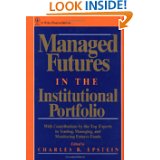First it was individual stock selection, than manager expertise, then investment styles (e.g., large-cap, small cap value), then asset allocation.
Now, a new study shows that the industry fashion is alternatives, which is a general term for both alternative strategies (long-short, leveraged, or absolute return) and the foray into different sectors (commodities, real estate) or strategies (managed futures, hedge funds, convertible arb, take-overs.)
The good news is that alternatives in all their forms (strategies and asset classes) belong in most large (over $250,000) investment portfolios, simply because long-only funds have shown they cannot deliver in a variety of long-term bear trending or volatile markets. The buy-and-hold strategy, which the vast majority of investors have to endure, is unnerving, risky and really acts to benefit funds more than shareholders. That’s because fund companies are compensated on their assets under management (AUM), not performance.
As a result, they want investors to suffer the roller coaster rides and sleepless nights, as their assets get ground down. Meanwhile, brokers and fund companies continue to get paid on AUM, revenue sharing and fees, regardless of market performance. The only way an investor can protest this arrangement is to transfer to another firm. This is the “Redemption Option” and it is a phrase that fund companies dread since it means you are taking your money and walking away.
Alternatives may provide a way out of that closed box, or at least, they provide shareholders with more ways to seek a positive return in volatile, bear markets. The benefits to investors come in a few forms. First, they have access to different strategies, leverage and asset classes. That’s good news because since the beginning of investing, markets have gone up and down.
From a historical perspective, the first use of long-short strategy may be attributed to Joseph, who served as a valued advisor to Pharaoh.  In some accounts, Joseph helped manage future crop failures by hedging. Egypt’s crops succumbed to droughts and pestilence long before stock markets, so farmers hedged through forward contracts or maintaining large warehouses of crops. Joseph is credited with devising some hedging strategy, but since this was before man-made regulations went into effect, we have scant evidence of the exact method.
In some accounts, Joseph helped manage future crop failures by hedging. Egypt’s crops succumbed to droughts and pestilence long before stock markets, so farmers hedged through forward contracts or maintaining large warehouses of crops. Joseph is credited with devising some hedging strategy, but since this was before man-made regulations went into effect, we have scant evidence of the exact method.
We do know that the first hedge fund, invented in 1949 by a former Fortune reporter, Winslow Jones (1900 – 1989), was a long-short fund that used leverage. Interestingly, Jones opted to take 20% of profits as compensation, and he did not get paid unless he made a profit. That standard still exists today for many hedge fund managers. In contrast, today’s mutual fund managers get paid under all market conditions, whether there is a profit or loss, even though they are long-only and use fewer strategies than Jones and other hedge fund managers.
Jones could be termed the first truly “active” manager, as opposed to many managers today who are closet-indexers or never engage in short selling or buying puts. One study which has not received enough investor attention come from Active Share, which found that one-third of all mutual fund assets are not actively managed. Active Share said they were “closet index” funds, which means investors are paying for active management, but in reality they are investing in funds that mimic an index. This is a low-cost management style, but investors are paying for more services, but are not getting them.
Getting Smart or Getting Desperate?
All this is background to a report released last week by American Century investments that found that four out of five brokers questioned use alternative investments with clients; and that number increases to nine out of 10 brokers at large investment firms. The large firms have an advantage because they have more experience in alternatives from their futures trading experience and work with institutional clients, who moved into this area about two decades ago.
This could also help sales of my book, “Managed Futures in the Institutional Portfolio” (Wiley, 1993), which was way ahead of its time, especially if it would have been called “Hedge Funds in the Institutional Portfolio.”

At the time I edited the book, hedge funds were very restricted and this exclusivity was enforced enough to exclude hedge funds from the mass investor market. In contrast, the benefits of managed futures, which still exist today, were open to a much wider audience of retail and institutional investors. (To make this book even more authentic to the futures industry, two of the contributors to my book have since been indicted. What better testimonial can be made to the authenticity of this book? )
The good news is that alternative strategy funds should be investigated and used based on your risk tolerance. Here are some funds I am invested in which have the flexibility and investment mandate to use various asset classes and strategies.
First Eagle Global (FESGX)
Forward Tactical Growth (FTGOX)
Ivy Asset Strategy (WASCX)
Templeton Global Total Return (TTRCX)
Virtus Premium Alphasector (VAPCX)
Note that these funds are best used in a portfolio and should not be considered stand-alone investments. Also note that I am not registered and do not receive any commission in any way by listing these funds. If you want more information about these funds, contact a registered broker or the fund company directly.










